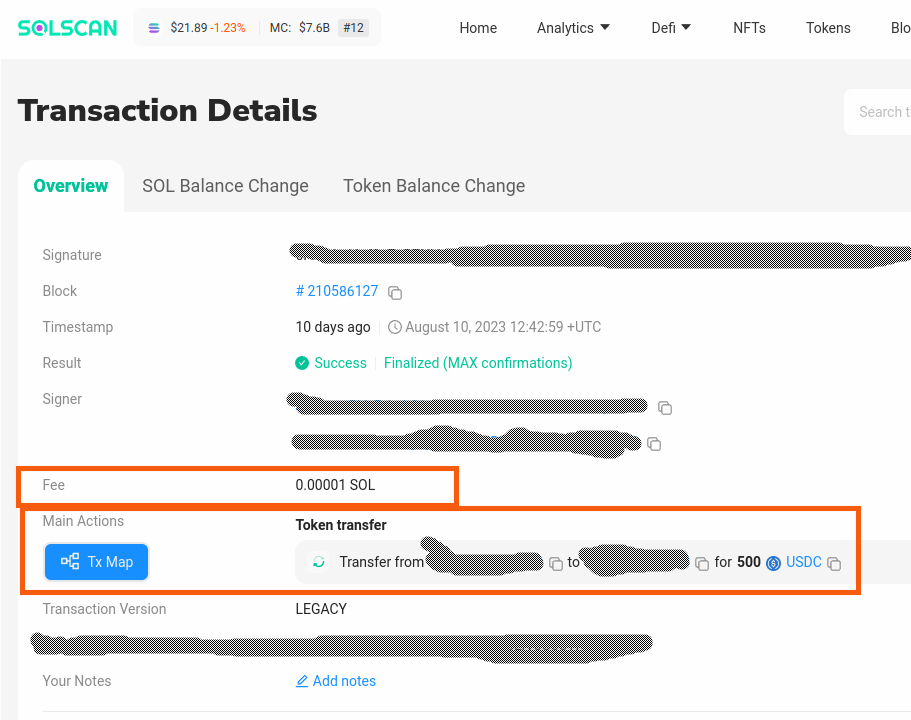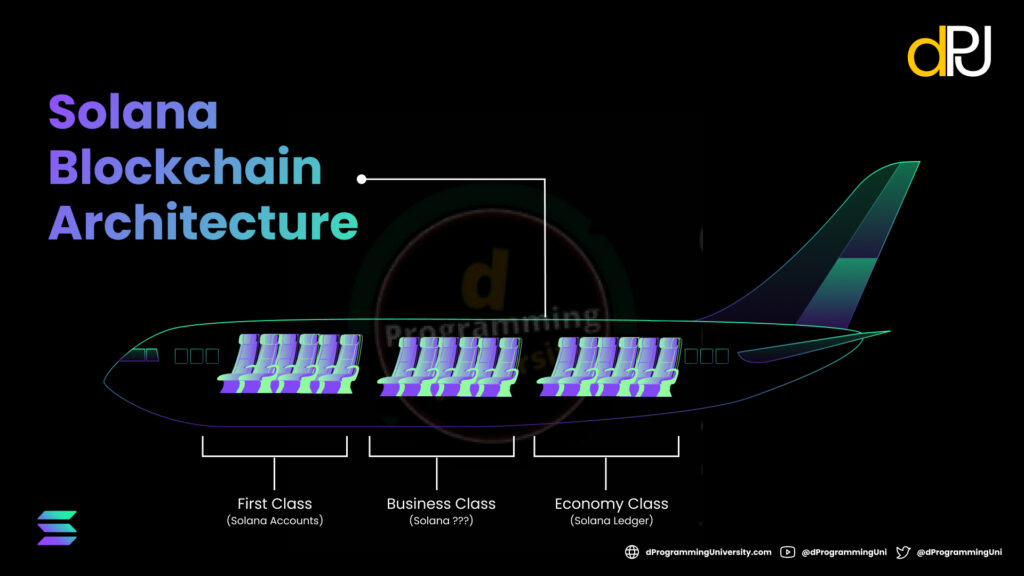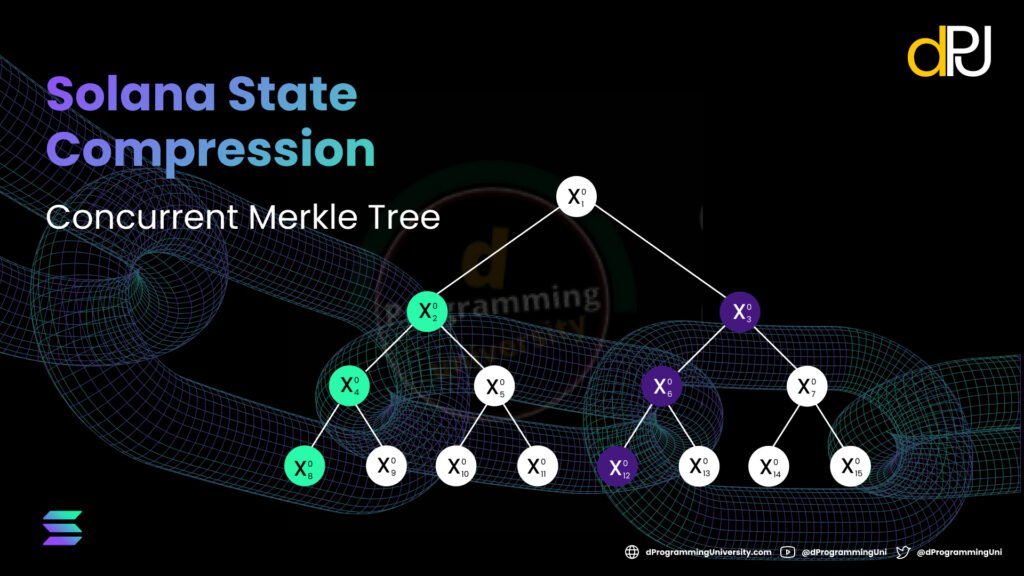Deep Dive Into Solana’s STATE COMPRESSION: A Revolutionary Approach to Blockchain Data Storage
1.0 Introduction
1.1 Overview Of Guide/Tutorial’s Goal
Demystifying Solana’s State Compression
In this guide, I will be diving deep into the innovative approach to Blockchain data storage introduced by Solana called “State Compression” which can reduce the cost of data storage up to 100x from what it used to be before without sacrificing decentralization and on-chain data integrity.
It will include what is state compression and how does Solana’s account state compression work in a simplified manner.
I will also be shining light on a live case study of projects using state compression to save on-chain data storage costs like Helium and
how Solana state compression was so helpful that the Helium team and community eventually achieved their goal to switch off their native "Helium Blockchain" to migrate all their users onto Solana Blockchain yet without breaking bank for transaction fees.
Even though my content is mainly tailored to developers.
This “State Compression” deep dive will be more simplified to be easily understandable by both developers and non-developers/non-technical Blockchain enthusiasts due to its use cases are not limited to developers only.
Also for my Solidity for Solana devs reading this, understanding this concept might be another icing on the cake to convince you to give your Solidity skill a trial on Solana for your next innovative dApp idea that high Blockchain data storage cost might have kept unrealistic for a long time on Ethereum and other EVM Blockchains.
1.2 Introduction To Solana And Its Unique Approach To Blockchain Solutions
Solana Blockchain is currently the fastest and cheapest multi-purpose Blockchain as of now that am writing this article (that may change tomorrow).
Someone said but there are new faster Blockchains. I know but am talking of those already battle-tested beyond whitepaper😜
Compared to Ethereum,
Solana can process up to 65,000 TPS (Transaction Per Second) when compared to Ethereum which is about 30TPS🤭.
In addition to this comes cheap transaction too.

Imagine I received $500USDC on Solana which cost the sender 0.0001 SOL (price was around $24/SOL = 0.00022 USD), then traded it to SOL. Totally that cost me less than 1 cent.
Compared to another token I received worth just 10% of the one I received on Solana, $50USDC on Ethereum. It cost me almost $15USD to swap to ETH similar to what I did on Solana.
With the above, it is clear that Solana got the win in terms of cheap transaction fees in addition to high speed and finality time.
Now, imagine Minting NFT on both Blockchains. The fee gap is too wide🤑😂.
On top of this, the introduction of state compression is making transaction fees on Solana to become even cheaper to do on-chain activities like NFT minting and more (especially in mass - millions)
1.3 Stuck? Get Support✋
I understand based on experience with developers that things can always break or get difficult to figure out, especially for beginners.
That is why you can join Discord below to get support when you get stuck.
Join dProgrammingUniversity Discord Server – I have created a dedicated channel #Solana (under the BLOCKCHAINS category) to offer support to my Solana developer content readers like this guide. So, feel free to ask questions in there if stuck with this guide.
Follow me on Twitter
DISCLOSURE:
We may hold, invest, trade or receive rewards/grants/bounty/tokens from reviewed/discussed web3 projects/affiliates (before, during or after this content was published).
DISCLAIMER:
All our contents at dProgramming University are for educational purposes only and do not constitute financial, trading, investment or development advice.
Please do your own research (DYOR).
By using or following the whole or part of this content, you agree that we are not liable for any losses that you may suffer thereafter.
2.0 The Evolution Of Blockchain Data Storage
Before we move to understand how state compression works on Solana. It is important to know why it was introduced in the first place and what existing real Blockchain issues and challenges it aims to solve.
2.1 Challenges Faced By Traditional Data Storage Methods
There are a lot but one that stands out in relation to Blockchain is that traditional data storage has a single point of failure.
Why?
Because they are centralized and controlled by a few people who can do anything with users’ data.
Due to this, people are gradually turning to decentralized data storage options which are mainly offered via Blockchain technology.
2.2 History Of Data Storage Challenges In Blockchain
As more people gradually turn to Blockchain for data storage decentralization, it soon became clear that existing Blockchains can not handle it.
It also became very clear that one of the costliest actions to do on Blockchain is on-chain data storage.
On-chain data storage involves storing data directly on the Blockchain to preserve the data integrity, ensure its security and decentralization but that as proven to be too costly with existing Blockchains method of data storage.
– Solomon Foskaay, dProgramming University (dPU)
Aside from the high cost.
It is also not scalable.
It may make sense to mint a collection of 1,000 – 10,000 PFP NFTs but not that easy when dealing with a 100,000 – 1Million+ NFT collection.
2.2.1 Dependent on Off-chain data storage:
Meanwhile, most existing and leading multi-purpose smart contract Blockchains like Ethereum do require the storage of data off-chain via platforms like IPFS (Interplanetary File System) with a reference to the unique id to avoid the high cost of on-chain storage and ensure persistent availability of the stored data.
2.3 The Importance Of Efficient Data Storage In Blockchain
To achieve mass adoption of Blockchain technology, one of the main areas to fix is increasing data storage and retrieval efficiency.
With efficient data storage in Blockchain comes the following benefits that will onboard more to the ecosystem:
- Lower transaction fees
- Faster finality time
- Data storage security enhancement
- Data retrieval efficiency
3.0 Demystifying State Compression: Introducing The Concept Of State Compression On Solana Blockchain
After understanding the challenges in data storage and retrieval in current Blockchains. It is time to explore what is state compression and how it is solving some of the aforementioned and discussed data storage challenges already.
3.1.0 What Is Solana State Compression Explained (Non-Technically)
State compression is a concept introduced on Solana which involves storing data on-chain without actually utilizing the Solana account which is costlier but instead, it is stored on the Solana ledger with a fingerprint available as proof of its availability.
I get that is confusing right?
Yeah, I was also confused and took a while to comprehend how the genius data storage actually works.
“State Compression” allows Solana programs and decentralized apps (dApps) to save money by storing data in a more affordable section of the Solana blockchain called the “ledger”.
– Solomon Foskaay, dProgramming University (dPU)
This is in contrast to using the more costly “account” space.
By doing so, Solana ensures secure on-chain data storage while also being cost-effective (100x cheaper)
In reality, it involved an even more technically confusing process only meant for the code-hearted🫣 ,
But as I promised earlier at the intro to this deep dive, have extracted away the technical jargon
(meanwhile will include links to helpful resources at the end of this article for technical nerds and developers to consult for a step-by-step implementation guide for state compression for your dApp development data storage).
That sorted,
Now let us get back to a less technical breakdown I personally coined to understand it myself and hopefully, it will help my readers understand it too.
Remember if you got questions,
kindly hop into the dedicated Solana channel on the dPU Discord server.
Let us examine the following chat to further simplify things

Wahoo, from the above screenshot it is clear that as more data is needed to be stored on-chain, the more costlier it becomes until it is out of reality and makes no economical sense to store such huge data on-chain.
But thanks to state compression, the same huge data can now be stored on-chain while paying about 100x less than it would have cost without State compression in use – fantastic😍
3.1.1 How State Compression Differs From Traditional Blockchain Data Storage
Unlike existing means of storing on-chain data which involves storing the data directly like every other transaction on the Solana accounts,
which means the more data stored as time goes by it will affect the speed, create bottlenecks and make transactions much costlier and slower too.
As the Solana Engineers foresee such, to avoid it.
They opted instead to use a cheaper segment of the Solana Blockchain known as the ledger with does not have a direct impact on the normal day-to-day transactions in Solana accounts.
State compression saved data in a compressed tree-like structure known as Merkle tree.
3.1.2 Benefits of State Compression on Solana Blockchain
As seen above there are numerous benefits introduced to on-chain data storage by state compression.
A few of them are listed below:
- Low transaction cost makes on-chain data storage more attractive
- Prevent clogging of the other day-to-day Blockchain activities
- Preserve the data integrity because it accesses the same level of on-chain security as any other transaction on the Solana Blockchain
- Prepares Solana to accommodate future growth and mass adoption of the Blockchain without bottleneck that non-compressed state data storage would have introduced
- Encourages data storage decentralization even further
3.2.0 How Solana Account State Compression Works
Yeah, it is time to have a clearer look at how Solana state compression actually works.
An analogy I used to understand it with less technical jargon is depicted in the diagram have drawn for you below:
3.2.1 Airline Analogy for Solana State Compression
Imagine an airline where passengers can choose between different classes:
- First Class
- Business Class, and
- Economy Class
All these classes exist within the same Aeroplane,
which I liken to Solana on-chain architecture.

1. First Class (Current State of Solana Without State Compression):
This is the most luxurious and costly way to travel. Passengers have ample space, and all amenities are readily available. However, it’s expensive to maintain this level of comfort.
In Solana’s architecture, this is like storing all data in the accounts, which is costly in terms of data storage fees.
2. Economy Class (Ledger Storage with State Compression):
This is the most cost-effective way to travel. The seats are smaller, and the amenities are limited, but it gets you to your destination.
Solana’s ledger storage is like the Economy Class. It’s cheaper but still part of the same “aeroplane” (on-chain).
Therefore, data can be stored here, and when needed, it can be accessed to be used in First Class (accounts).
3. Business Class (Intermediate):
This could represent other optimization techniques that Solana might employ in future maybe, offering a balance between cost and amenities.
4. Pilots and Crew (Blockchain Infrastructure):
Just like the pilots and crew are essential for the flight, the underlying blockchain infrastructure, including the ledger, is crucial for Solana.
5. Flight Schedule (Blockchain Protocol):
Regardless of which class you’re in, everyone is on the same flight schedule because all the classes and compartments are inside a single Aeroplane.
Similarly, whether data is in the accounts or the ledger, it’s all part of the same Solana protocol. Giving it the same level of security, decentralization is inherent in Solana Blockchain accounts.
Key Analogy Summary:
- On-Chain: Whether you are in First Class or Economy, you’re still on the same Aeroplane, just like how both accounts and the ledger are part of Solana’s on-chain architecture.
- Accessibility: Data stored in the ledger (Economy Class) can be accessed and used in accounts (First Class) when needed, without having to “change flights.”
- Cost-Effectiveness: Just like Economy Class is a more cost-effective way to travel, storing data in the ledger is more cost-effective than storing it in accounts. In fact, could be over 100x cheaper in the case of state compression data storage.
- Flexibility: The system is flexible enough to allow for data to move between different “classes” based on needs, similar to how some airlines allow for class upgrades.
- Unified Blockchain Architecture: Regardless of where the data is stored, you need to always remember that it is all governed by the same set of rules, much like how all passengers abide by the same flight schedule and rules regardless of their class as long as it is on the same Aeroplane.
3.3.0 Debunking The Off-Chain Misconception Of Solana State Compression
Before moving on to see some use cases of state compression on Solana already. Let me quickly debunk the common misconception have read online.
Solana state compression is off-chain storage which makes it less secure compared to on-chain data storage.
Nope, that isn’t true.
I understand that state compression is technically indeed confusing, and that’s why I decided to write this article to explain it in a less technical easy to understand manner with a familiar analogy I personally used to understand it.
Solana state compression actually stores the data on-chain and not off-chain using what is known as a concurrent Merkle tree to create a fingerprint (hash) that makes every data retrievable on-chain.

Imagine you have a unique box (called a Merkle tree) that can take multiple items, give each of them a special code (hash), and then combine all these codes to create one final code. Instead of storing all the individual items on Solana accounts (which is costly), you only store this final code. This way, you save space and still ensure that all the items are accounted for because where the actual merkle tree for the items where created (ledger) also belong to the overall Solana on-chain architecture.
4.0 Real-World Applications Of Solana State Compression
The beauty of technological innovations and advancements like state compression lies not just in their conception and shining promises of capabilities and mouth-watering features but in their real-world applications.
Solana’s state compression is not just one of the promises in Blockchain that remains a theoretical marvel.
It is a practical solution that is now already making waves in the blockchain world with a growing list of real-world use cases.
Let us explore one of them and the benefit derived.
One of the most common use cases of Solana State Compress is Compressed NFT
4.1 Case Study Of Helium Migration And Adoption Of Solana State Compression
Helium’s Migration Summary:
- Background: Helium, originally designed as a decentralized network for IoT devices, faced a bottleneck when it came to rising data storage costs. The project can be likened to a high-speed train🚄 running on outdated low-speed train tracks🤔.
- Challenges Before State Compression: The primary hurdle was the escalating cost of storing data. It was like paying first-class prices for an economy-class seat. That is frustrating and would affect massive adoption down the line.
- Implementation and Results: Helium migrated its data storage to Solana and I liken it to upgrading the tracks for that high-speed train mentioned earlier to modern tracks that suit the modern train.
- The result? Faster on-chain data storage and access at a fraction of the cost on Solana Blockchain.
4.2 Benefits of Solana State Compression Realized By Helium Project
Helium has experienced a lot of benefits derived from migrating to Solana but more importantly, adopting Solana’s state compression to save on data storage costs.
- Cost Savings: Helium saw a drastic reduction in its migration, data storage and operational costs. It’s like flying in a fuel-efficient jet as opposed to a gas-guzzler🤑🤑🥵.
- Increased Transaction Speeds: The transaction latency was cut down significantly. If it was days of shipping earlier, it can be considered an express delivery now!
- Enhanced User Experience: The end-users of the Helium network now experience smoother, faster, and more reliable services.
- Security and Decentralization: It accesses the same level of security to achieve data integrity considering its on-chain data storage.
5.0 Conclusion
The blockchain realm is ever-evolving, with innovations emerging at every corner. Solana, with its state compression, has undeniably etched a revolutionary mark in the area of blockchain data storage.
In this guide, I have taken you on a comprehensive journey, shedding light on the intricacies of Solana’s state compression, its transformative potential, and its real-world applications.
5.1 Summarizing The Transformative Potential Of State Compression On Solana
- A Paradigm Shift in Data Storage: Solana’s state compression isn’t just about reducing data size; it’s a paradigm shift in how we perceive and handle blockchain data. By leveraging the ledger, a traditionally overlooked component, Solana has redefined on-chain data storage, making it more efficient and cost-effective.
- Debunking Myths: The misconception that state compression is off-chain has been debunked. As we’ve seen, the ledger, though distinct from accounts, remains an integral part of Solana’s on-chain architecture. This ensures that data remains secure, transparent, and easily accessible.
- Real-World Impact: Through the case study of Helium’s migration, we’ve witnessed the tangible benefits of state compression. Projects that adopt this technology can expect significant cost savings, faster transaction speeds, and an overall enhanced user experience.
5.2 A Call To Action To Explore Solana Further
Blockchain technology is vast, and while this guide has provided a deep dive into Solana’s state compression, there’s so much more to explore. Solana’s vision of a decentralized future, where scalability and efficiency are paramount, is gradually coming to fruition.
For those intrigued by the potential of Solana and its state compression (especially developers):
- Dive Deeper: Delve into Solana’s official documentation to gain a more technical understanding of its workings.
In conclusion, as the blockchain landscape continues to evolve, innovations like Solana’s state compression will play a pivotal role in shaping the future.
It’s an exciting time to be part of this journey, and the horizon holds even more promise.
6.0 WHAT NEXT?🚀
I aim to create helpful Web3/Solana content like this and share them in future guides with you. Thus, kindly use the social media share button to share this guide if you have found it helpful or will be helpful to some developers in your social media sphere.
And kindly join the dPU discord to stay in the loop.
Thanks for your time, it’s been a wonderful ride with you all this while.
SOLOMON FOSKAAY
Founder, dProgramming University (dPU).
Twitter: SolomonFoskaay
See you in the next series.
7.0 REFERENCES
State Compression Brings Down The Cost Of Minting NFT On Solana to ~$110
How to use compressed NFT on Solana Powered by State Compression
Validated | How Compression Is Changing How We Think About NFTs







You really make it seem so easy with your presentation but I find this topic to be actually something which I think I would never understand.
It seems too complex and very broad for me. I am
looking forward for your next post, I’ll try to get the hang
of it!